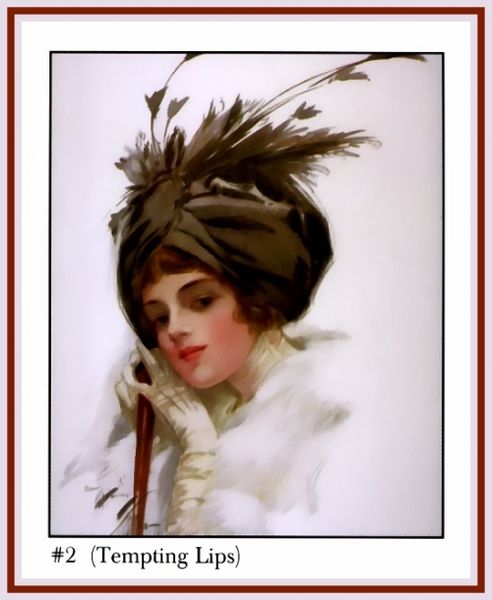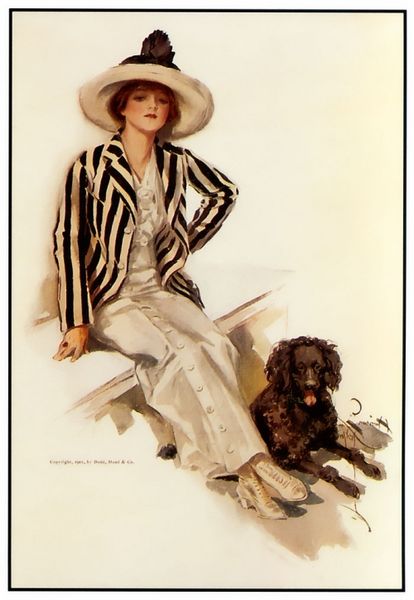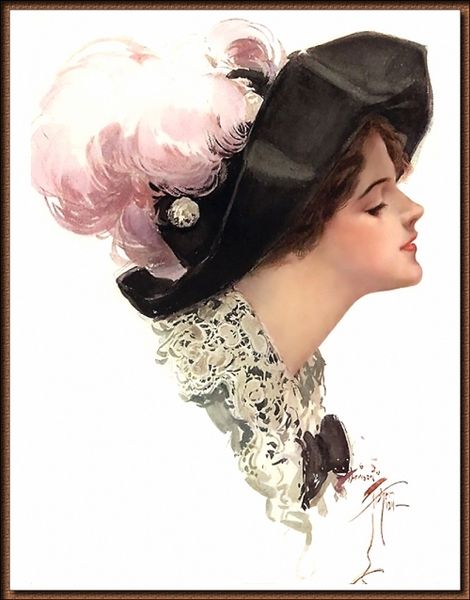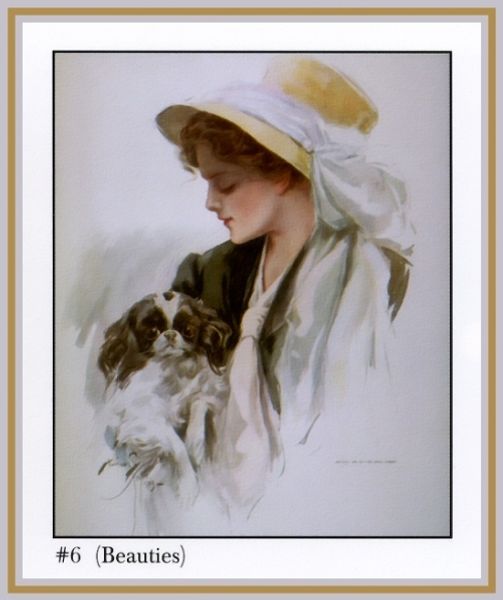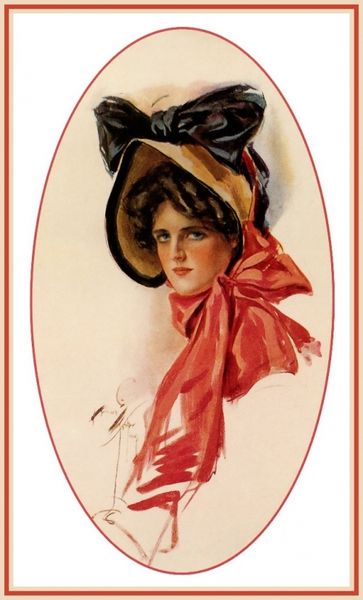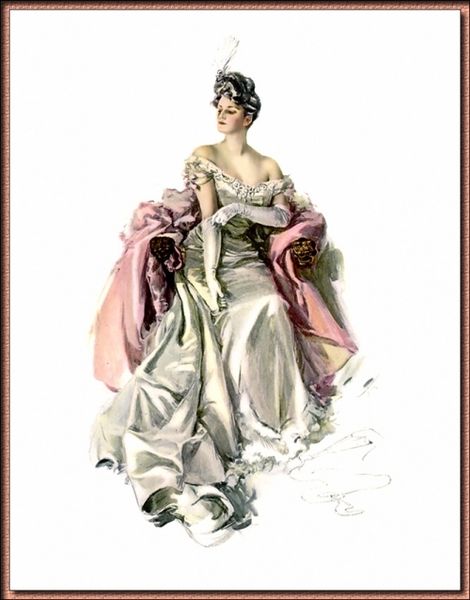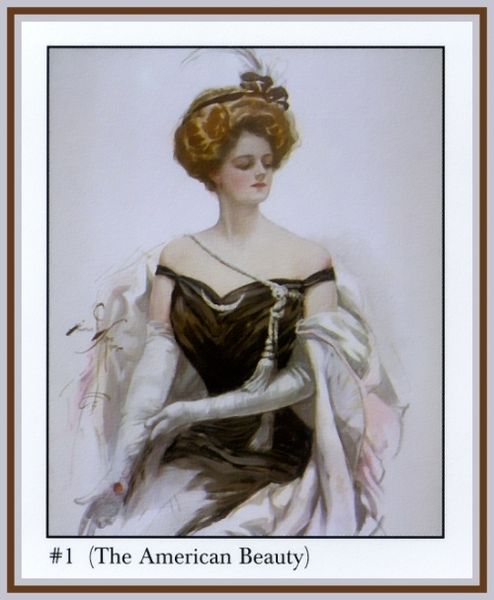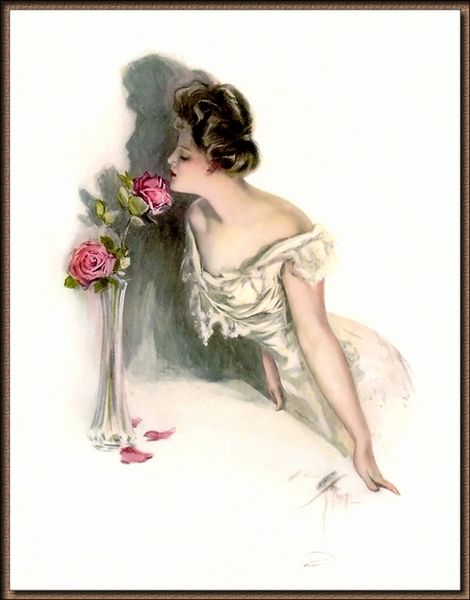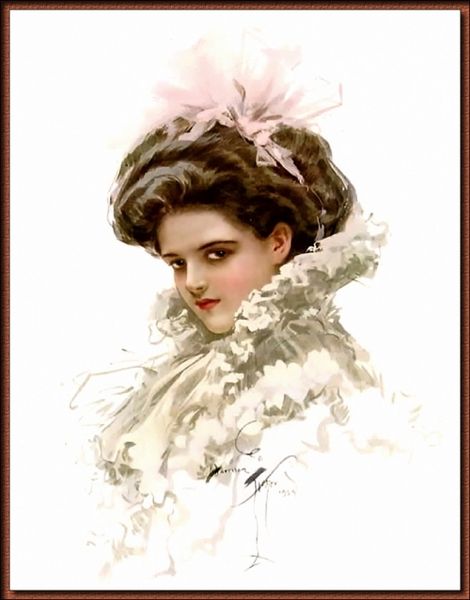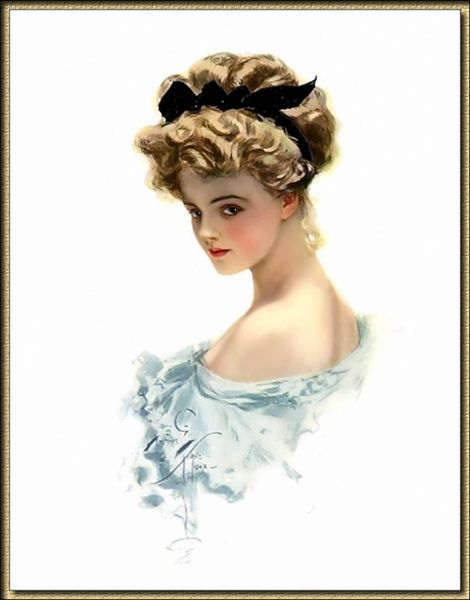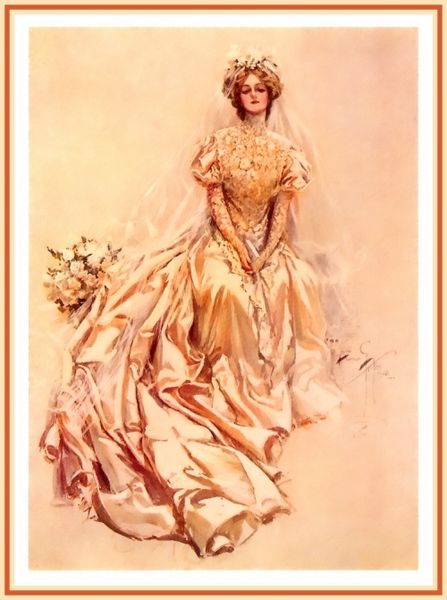
painting, watercolor
#
portrait
#
painting
#
watercolor
#
intimism
#
surrealism
#
costume
#
genre-painting
#
watercolor
Copyright: Public domain
Curator: Here we have an untitled watercolor painting by Harrison Fisher. It depicts a woman in what appears to be turn-of-the-century dress. What strikes you initially? Editor: Opulence, definitely. The fur, the hat with the feathers, the little dog with a bow... it's a carefully constructed image of status, perhaps even excess. And that vacant stare from the girl, is there a specific emotion coming out, like fear? Curator: Well, Harrison Fisher was a very successful commercial artist, best known for his "American Girl" illustrations. So, this portrait, if we can call it that, likely served a decorative, aspirational purpose, much like advertising does today. The social expectations for women at the turn of the century, especially within wealthy society, dictated an aesthetic presentation of status. Editor: Exactly! The leopard print, it's almost an echo of ancient power symbols—like Hercules in the lion skin. Even the dog acts as a symbol for the pet in the role of familiar as an avatar of fortune and domestic control; here the subject and her dress mirror what would normally have been considered monstrous or evil by way of that animal. The overall effect feels very performative. Curator: Precisely, her gaze suggests both agency and subjection, revealing that the performance itself is, paradoxically, an emotional struggle for control in a society increasingly obsessed with spectacle. It's as if Fisher, despite aiming to simply please, gives us access to some anxiety within these visual structures of beauty. Editor: And yet, it has aged poorly. Those signifiers of wealth and beauty now come across almost grotesquely—a signifier of the excess that would create cultural and political unrest in a country in deep recession. Even in his own era, he could never truly remove an edge of despair. Curator: Absolutely, Fisher's illustration provides a window into that very paradox: the public desire for idealized beauty masking deeper anxieties regarding class, gender roles, and wealth. It prompts us to question how social conventions dictate what we deem visually pleasing. Editor: Leaving one to question whether she owns the cat or whether the cat owns her! Curator: Or, indeed, whether either knows anything more than to be a beautiful accessory!
Comments
No comments
Be the first to comment and join the conversation on the ultimate creative platform.
